Balkinization
an unanticipated consequence of
Jack M. Balkin
Balkinization Symposiums: A Continuing List
E-mail:
Jack Balkin:
jackbalkin at yahoo.com
Bruce Ackerman
bruce.ackerman at yale.edu
Ian Ayres
ian.ayres at yale.edu
Corey Brettschneider
corey_brettschneider at brown.edu
Mary Dudziak
mary.l.dudziak at emory.edu
Joey Fishkin
joey.fishkin at gmail.com
Heather Gerken heather.gerken at yale.edu
Abbe Gluck abbe.gluck at yale.edu
Mark Graber
mgraber at law.umaryland.edu
Stephen Griffin
sgriffin at tulane.edu
Jonathan Hafetz
jonathan.hafetz at shu.edu
Jeremy Kessler
jkessler at law.columbia.edu
Andrew Koppelman
akoppelman at law.northwestern.edu
Marty Lederman
msl46 at law.georgetown.edu
Sanford Levinson
slevinson at law.utexas.edu
David Luban
david.luban at gmail.com
Gerard Magliocca
gmaglioc at iupui.edu
Jason Mazzone
mazzonej at illinois.edu
Linda McClain
lmcclain at bu.edu
John Mikhail
mikhail at law.georgetown.edu
Frank Pasquale
pasquale.frank at gmail.com
Nate Persily
npersily at gmail.com
Michael Stokes Paulsen
michaelstokespaulsen at gmail.com
Deborah Pearlstein
dpearlst at yu.edu
Rick Pildes
rick.pildes at nyu.edu
David Pozen
dpozen at law.columbia.edu
Richard Primus
raprimus at umich.edu
K. Sabeel Rahmansabeel.rahman at brooklaw.edu
Alice Ristroph
alice.ristroph at shu.edu
Neil Siegel
siegel at law.duke.edu
David Super
david.super at law.georgetown.edu
Brian Tamanaha
btamanaha at wulaw.wustl.edu
Nelson Tebbe
nelson.tebbe at brooklaw.edu
Mark Tushnet
mtushnet at law.harvard.edu
Adam Winkler
winkler at ucla.edu
Compendium of posts on Hobby Lobby and related cases
The Anti-Torture Memos: Balkinization Posts on Torture, Interrogation, Detention, War Powers, and OLC
The Anti-Torture Memos (arranged by topic)
Recent Posts
Reflections on interdisciplinarity and periodization upon reading The Interbellum Constitution
Just A Few Blogs
ACS Blog
Alas, a Blog
Althouse
Arts and Letters Daily
Atrios (Eschaton)
Bill of Health
Buzzflash.com
Buzz Machine
Cato at Liberty
Juan Cole (Informed Comment)
Concurring Opinions
The Constitution in 2020
Corrente
Crooked Timber
Daily Howler
Daily Kos
Dana Boyd
Brad DeLong
Digby (Hullabaloo)
Discriminations
Daniel Drezner
Kevin Drum (Mother Jones)
Electrolite
En Banc
Eunomia (Daniel Larison)
Fafblog
Michael Froomkin (Discourse.net)
GovLab (Beth Noveck)
Rick Hasen (Election Law)
History News Network
How Appealing
Ignatz (Sam Heldman)
The Importance of (Ernie Miller)
Infolaw
Instapundit
International Economic Law and Policy Blog
IntLawGrrls
Jacob Levy
Jesus' General
Jurisdynamics
The Kitchen Cabinet
Mark Kleiman
Law Blog Central
Larry Lessig
Lawyers, Guns and Money
Liberal Oasis
Brian Leiter's Law School Reports
The Leiter Reports
Marginal Revolution
Megan McArdle
Memeorandum
Metafilter
Mirror of Justice
The New Republic
Newseum
No More Mister Nice Blog
Brendan Nyhan
Opinio Juris
Orcinus
The Originalism Blog
Pandagon
Passport (Foreign Policy)
Overcoming Bias
Political Animal (Washington Monthly)
Political Theory Daily Review
Political Wire (Taegan Goddard)
The Poor Man
Virginia Postrel
Prawfsblawg
Public Reason
Jonathan Rauch
Raw Story
Redstate
ReligiousLeftLaw.com
Reporters Committee For Freedom of the Press
Reproductive Rights Blog
Rothman's Roadmap to the Right of Publicity
SCOTUS Blog
Seeing the Forest
Clay Shirky
The Shifted Librarian
The Situationist
Larry Solum (Legal Theory)
Andrew Sullivan
Talking Points Memo
Talk Left
Tapped
Tbogg
TechPresident
The Paper Chase (Jurist)
Tom Paine
Tom Tomorrow (This Modern World)
Eve Tushnet
Uggabugga
University of Chicago Law School Faculty Blog
Unqualified Offerings
The Volokh Conspiracy
War and Piece (Laura Rozen)
Wampum
Oliver Willis
Wonkette
Written Description
Matthew Yglesias
Yin
Your Choice of Feeds
1. XML
powered by
2. Atom Feed
3. RSS 2.0
Reflections on interdisciplinarity and periodization upon reading The Interbellum Constitution
Guest Blogger
A
federal system provides three possibilities of dividing power a) national
control, b) state management, or c) concurrent jurisdiction. As The
Interbellum Constitution underscores, which level of government is assigned
to what subject matter had huge impact on people’s lives. The most graphic
example is the 80,000 Native Americans in the Southeast who were displaced in the
1830s from their ancestral lands after Georgia hounded the federal government
into funding and staffing a violent mass deportation. (Chapter 7) But the
Constitution, apart from creating a federal system, is silent on broad swaths
of subject matters and which government has jurisdiction. In the interbellum era, 1815-1861, and now,
politics of each era, not the constitutional text, has defined the location of
the line between national and state power.
The
story LaCroix tells is not one that could be conveyed with doctrinal analysis
alone. The federal courts and their judges/justices are but one political actor
in the American political system. The courts and their personnel are
constituted by their political, social, and economic environments even as their
legal decisions also created the lived realities of those affected by their
rulings. Going beyond the doctrinal development in each area of law, LaCroix
explains why landmark legal opinions were decided the way they were given the
influences of the era, not just what was decided.
The
Interbellum Constitution
made me think about how historians and American Political Development (APD)
political scientists take overlapping approaches to studying a common set of
questions and the benefits and drawbacks of each. Where does federal power end
and state/local power begin? In what subject matters do both levels of
government share power concurrently? Why?
These are timeless questions that animate US federalism.
Historians
and American Political Development political scientists periodize differently
because they are focusing on different things.
With apologies to Milton Grodzins, author of the original
federalism cake analogy, think of periodizing as cutting a cake. Imagine a
layer cake with three tiers of cake separated by frosting. The cake represents
a research topic. There is more than one method to slice a layer cake, even
though the conventual way is to cut it vertically. One could carve the cake
horizontally, vertically, or even diagonally. Each choice would yield a different ratio of
cake to frosting and distinct look at the same cake. The Interbellum
Constitution slices into federalism history by tackling an understudied period,
the time between the War of 1812 and the Civil War, which apparently historians
regard as the equivalent of “flyover country” where nothing important happened.
(pg. 10)
US
historians periodize in many ways, with beginning and end points of era defined
and contested depending on who is periodizing. Roughly, the periods are the Revolution and Confederation (1776-1789),
the early republic (1783-1815), national expansion (1815-1880) and Civil War
and Reconstruction eras (1861 to 1877). Historians also tend to specialize in
specific eras. However they choose to cut time, historians specialize in an era
to gain mastery of the “assumptions, values, and logics that framed a very
different mental universe of those living in a different time and place” as Jonathan
Gienapp described. The Interbellum
Constitution is exemplary in demonstrating what the values and assumptions and
especially at laying out the many alternative and plausible theories of
federalism at the time.
A
potential drawback for any scholar doing historical research focusing so
closely on a specific era is that one may focus on individual leaves on a tree
and miss the forest. That is, when one narrows one’s chronological scope, one could
become convinced of the great importance of an era or an event and not
appreciate broader trends or cyclical occurrences that span multiple time periods. (h/t to David Waldstreicher who I had a
generative conversation about this topic with 2022.)
Instead
of specializing in an era, American Political Development scholars typically
research and write about larger blocks of time than historians and periodize in
ways that historians may not. APD scholars are searching for patterns in the
evolution of an institution (e.g. political parties, the US bureaucracy) or public policy area (e.g. immigration, social welfare). APD
scholars look for periods of stasis and rapid change sparked by watershed
moments (like the Civil War). These “punctuated equilibrium” points, a concept borrowed from
evolutionary biology, in a policy area or institution’s evolution mark durable shift
to a distinct stage of development. An example is FDR’s presidency, and its
expansion of federal power is regarded by APD scholars (and historians) as the punctuated
equilibrium point separating the old and modern presidency. In concentrating on
locating points of punctuated equilibrium, APD scholars risk glossing over or missing
the continuity of quotidian political, social, and economic realities that shape
each historical era or the variations that occur between momentous events.
The Interbellum Constitution
splits the difference. Because
LaCroix delved into an under-studied period, she was able to uncover
continuities in “commerce, concurrent power, and jurisdictional multiplicity”
which is what contemporaries experienced as they crafted legal arguments based
on those constraints. (pg. 3) Like APD scholars looking for institutions as a
source of continuity and change, she shows how the Constitution constitutes
even as its meanings were contested. During the interbellum era, multiple
interpreters of constitutional meaning was frequent and common before the US fell
into the current situation of Supreme Court-centered judicial review and frequent
judicial supremacy.
An
important corrective The Interbellum Constitution provides is that it
refutes past characterizations of intergovernmental power. As a result of her
not applying more recent federalism configurations retrospectively, LaCroix refutes
the binary “dual federalism” that Edward
Corwin wrote
about in 1950. Dual federalism is an arrangement in which the federal government
and the states/localities operated in their own spheres across subject matters.
Corwin also characterized 19th century dual federalism as state
versus federal conflict. The Interbellum Constitution shows that across
policy areas, the relationship of the federal to the state and local
governments was complex and not always one of conflict.
On the
point of varied intergovernmental relationships, LaCroix’s findings are
consistent with Grace Mallon’s excellent
dissertation’s that
showed the pattern of federal and state/local power in the early republic
“cannot fully be captured either by the designation ‘dual federalism’ or by
that of ‘co-operative federalism,’” but by “‘co-ordinated federalism’” which is
the “constant mutual awareness and negotiation that characterized
intergovernmental relations.” (pg. 25 of Mallon’s dissertation). LaCroix tells
a similar story of relations between the national and state/local governments
of one of “concurrence and negotiation, rather than as a stark, all-or-nothing
contest between federal and state power.” (pg. 3) The binary of federal and
state governments did not come about in multiple policy areas until after the
Civil War.
During
the early republic and the interbellum eras, the spheres of influence of the
national, state, and local governments were under contestation and negotiation.
Sometimes, the national government and states cooperated because the federal
government lacked administrative capacity to implement its policies across the
land and it needed states officials and local resources as force multipliers.
The interbellum period was when the national government was developing, but had
not yet developed, the enormous state capacity it has today. As a result,
subject matter by subject matter and in case-by-case federalism questions about
divisions of labor were being hashed out.
For better
or for worse, the federal system is here to stay, and state versus federal battles
continue today, albeit in other policy areas and not in slavery, commerce, or commercial
union. It behooves us to understand from the past a) what motivated state/local
actors and federal actors to try to preserve power for themselves, b) when and
why states and the national government acquiesced to concurrent jurisdiction,
c) and when or why states demanded federal intervention.
The cost
of not knowing federalism history, particularly the rationales for specific
intergovernmental configurations can have political effects by leading to
erroneous conclusions that present day divisions of labor are normal, natural,
and correct. As historical scholarship contributes to our collective memory, Jack Balkin reminds us that in our present day
perception of a tradition, which is distinguishable from actual history, there
are practical effects. He writes: Memory
(and erasure) are important to the construction of tradition because they
affect how much we actually remember about the past. If we describe a tradition
only in general or abstract terms, or if we know nothing about its origins, it has
the presumption of moral authority. But
as soon as we begin to remember distasteful facts about how and why past
practices developed and continued over time, the moral authority of the past
threatens to evaporate.
At stake
now is how we individually and as a nation square our collective constitutional
memories with our understandings of present-day intergovernmental contests for
power in citizenship and immigration, abortion and reproductive rights, LGBTQ
rights, to name a few salient policy areas.
The
Interbellum Constitution
is an outstanding contribution to our collective memory and thus our
constitutional memories. The
historical motivations and rationales for exercises of federal authority, the
belief of political powerless groups about how the Constitution can also
protect them, and the outsized role that slavery played in states and
individuals jealously guarding their rights to certain policy areas needs to be
laid bare and understood as we debate similar issues today.
Anna O.
Law is Herbert Kurz Chair in Constitutional Rights and Associate Professor at
the City of New York, Brooklyn College. You can reach her at alaw [at] Brooklyn
[dot] cuny [dot] edu. She thanks Ben Carp and Boris Heersink for their help
with this essay.
Posted
9:30 AM
by Guest Blogger [link]
Books by Balkinization Bloggers

Linda C. McClain and Aziza Ahmed, The Routledge Companion to Gender and COVID-19 (Routledge, 2024)

David Pozen, The Constitution of the War on Drugs (Oxford University Press, 2024)

Jack M. Balkin, Memory and Authority: The Uses of History in Constitutional Interpretation (Yale University Press, 2024)
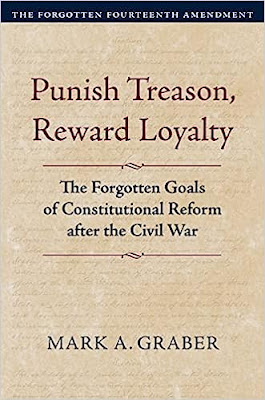
Mark A. Graber, Punish Treason, Reward Loyalty: The Forgotten Goals of Constitutional Reform after the Civil War (University of Kansas Press, 2023)
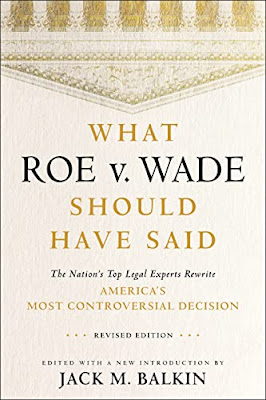
Jack M. Balkin, What Roe v. Wade Should Have Said: The Nation's Top Legal Experts Rewrite America's Most Controversial Decision - Revised Edition (NYU Press, 2023)

Andrew Koppelman, Burning Down the House: How Libertarian Philosophy Was Corrupted by Delusion and Greed (St. Martin’s Press, 2022)

Gerard N. Magliocca, Washington's Heir: The Life of Justice Bushrod Washington (Oxford University Press, 2022)
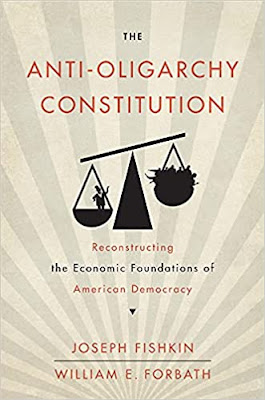
Joseph Fishkin and William E. Forbath, The Anti-Oligarchy Constitution: Reconstructing the Economic Foundations of American Democracy (Harvard University Press, 2022)
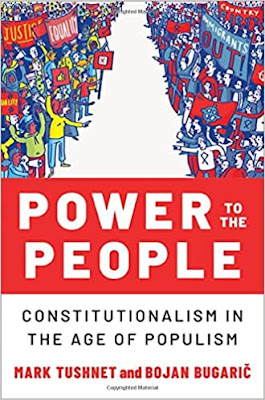
Mark Tushnet and Bojan Bugaric, Power to the People: Constitutionalism in the Age of Populism (Oxford University Press 2021).

Mark Philip Bradley and Mary L. Dudziak, eds., Making the Forever War: Marilyn B. Young on the Culture and Politics of American Militarism Culture and Politics in the Cold War and Beyond (University of Massachusetts Press, 2021).

Jack M. Balkin, What Obergefell v. Hodges Should Have Said: The Nation's Top Legal Experts Rewrite America's Same-Sex Marriage Decision (Yale University Press, 2020)

Frank Pasquale, New Laws of Robotics: Defending Human Expertise in the Age of AI (Belknap Press, 2020)

Jack M. Balkin, The Cycles of Constitutional Time (Oxford University Press, 2020)

Mark Tushnet, Taking Back the Constitution: Activist Judges and the Next Age of American Law (Yale University Press 2020).

Andrew Koppelman, Gay Rights vs. Religious Liberty?: The Unnecessary Conflict (Oxford University Press, 2020)

Ezekiel J Emanuel and Abbe R. Gluck, The Trillion Dollar Revolution: How the Affordable Care Act Transformed Politics, Law, and Health Care in America (PublicAffairs, 2020)

Linda C. McClain, Who's the Bigot?: Learning from Conflicts over Marriage and Civil Rights Law (Oxford University Press, 2020)
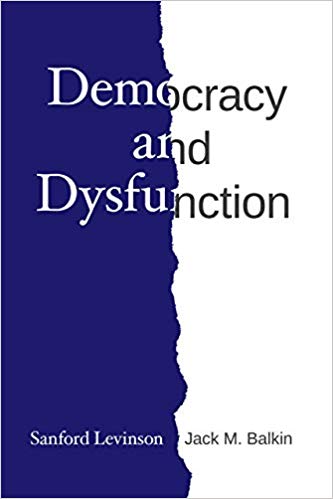
Sanford Levinson and Jack M. Balkin, Democracy and Dysfunction (University of Chicago Press, 2019)

Sanford Levinson, Written in Stone: Public Monuments in Changing Societies (Duke University Press 2018)

Mark A. Graber, Sanford Levinson, and Mark Tushnet, eds., Constitutional Democracy in Crisis? (Oxford University Press 2018)

Gerard Magliocca, The Heart of the Constitution: How the Bill of Rights became the Bill of Rights (Oxford University Press, 2018)

Cynthia Levinson and Sanford Levinson, Fault Lines in the Constitution: The Framers, Their Fights, and the Flaws that Affect Us Today (Peachtree Publishers, 2017)

Brian Z. Tamanaha, A Realistic Theory of Law (Cambridge University Press 2017)

Sanford Levinson, Nullification and Secession in Modern Constitutional Thought (University Press of Kansas 2016)

Sanford Levinson, An Argument Open to All: Reading The Federalist in the 21st Century (Yale University Press 2015)

Stephen M. Griffin, Broken Trust: Dysfunctional Government and Constitutional Reform (University Press of Kansas, 2015)

Frank Pasquale, The Black Box Society: The Secret Algorithms That Control Money and Information (Harvard University Press, 2015)

Bruce Ackerman, We the People, Volume 3: The Civil Rights Revolution (Harvard University Press, 2014)
Balkinization Symposium on We the People, Volume 3: The Civil Rights Revolution

Joseph Fishkin, Bottlenecks: A New Theory of Equal Opportunity (Oxford University Press, 2014)

Mark A. Graber, A New Introduction to American Constitutionalism (Oxford University Press, 2013)

John Mikhail, Elements of Moral Cognition: Rawls' Linguistic Analogy and the Cognitive Science of Moral and Legal Judgment (Cambridge University Press, 2013)

Gerard N. Magliocca, American Founding Son: John Bingham and the Invention of the Fourteenth Amendment (New York University Press, 2013)

Stephen M. Griffin, Long Wars and the Constitution (Harvard University Press, 2013)

Andrew Koppelman, The Tough Luck Constitution and the Assault on Health Care Reform (Oxford University Press, 2013)

James E. Fleming and Linda C. McClain, Ordered Liberty: Rights, Responsibilities, and Virtues (Harvard University Press, 2013)
Balkinization Symposium on Ordered Liberty: Rights, Responsibilities, and Virtues

Andrew Koppelman, Defending American Religious Neutrality (Harvard University Press, 2013)

Brian Z. Tamanaha, Failing Law Schools (University of Chicago Press, 2012)

Sanford Levinson, Framed: America's 51 Constitutions and the Crisis of Governance (Oxford University Press, 2012)

Linda C. McClain and Joanna L. Grossman, Gender Equality: Dimensions of Women's Equal Citizenship (Cambridge University Press, 2012)

Mary Dudziak, War Time: An Idea, Its History, Its Consequences (Oxford University Press, 2012)

Jack M. Balkin, Living Originalism (Harvard University Press, 2011)

Jason Mazzone, Copyfraud and Other Abuses of Intellectual Property Law (Stanford University Press, 2011)

Richard W. Garnett and Andrew Koppelman, First Amendment Stories, (Foundation Press 2011)

Jack M. Balkin, Constitutional Redemption: Political Faith in an Unjust World (Harvard University Press, 2011)

Gerard Magliocca, The Tragedy of William Jennings Bryan: Constitutional Law and the Politics of Backlash (Yale University Press, 2011)

Bernard Harcourt, The Illusion of Free Markets: Punishment and the Myth of Natural Order (Harvard University Press, 2010)

Bruce Ackerman, The Decline and Fall of the American Republic (Harvard University Press, 2010)
Balkinization Symposium on The Decline and Fall of the American Republic

Ian Ayres. Carrots and Sticks: Unlock the Power of Incentives to Get Things Done (Bantam Books, 2010)

Mark Tushnet, Why the Constitution Matters (Yale University Press 2010)
Ian Ayres and Barry Nalebuff: Lifecycle Investing: A New, Safe, and Audacious Way to Improve the Performance of Your Retirement Portfolio (Basic Books, 2010)
.jpg)
Jack M. Balkin, The Laws of Change: I Ching and the Philosophy of Life (2d Edition, Sybil Creek Press 2009)

Brian Z. Tamanaha, Beyond the Formalist-Realist Divide: The Role of Politics in Judging (Princeton University Press 2009)
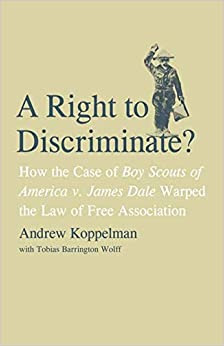
Andrew Koppelman and Tobias Barrington Wolff, A Right to Discriminate?: How the Case of Boy Scouts of America v. James Dale Warped the Law of Free Association (Yale University Press 2009)

Jack M. Balkin and Reva B. Siegel, The Constitution in 2020 (Oxford University Press 2009)
Heather K. Gerken, The Democracy Index: Why Our Election System Is Failing and How to Fix It (Princeton University Press 2009)

Mary Dudziak, Exporting American Dreams: Thurgood Marshall's African Journey (Oxford University Press 2008)

David Luban, Legal Ethics and Human Dignity (Cambridge Univ. Press 2007)

Ian Ayres, Super Crunchers: Why Thinking-By-Numbers is the New Way to be Smart (Bantam 2007)

Jack M. Balkin, James Grimmelmann, Eddan Katz, Nimrod Kozlovski, Shlomit Wagman and Tal Zarsky, eds., Cybercrime: Digital Cops in a Networked Environment (N.Y.U. Press 2007)
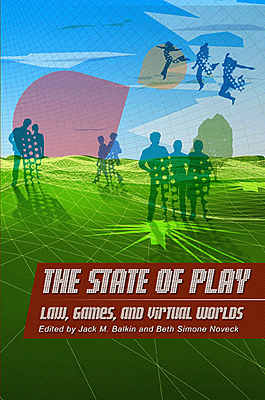
Jack M. Balkin and Beth Simone Noveck, The State of Play: Law, Games, and Virtual Worlds (N.Y.U. Press 2006)

Andrew Koppelman, Same Sex, Different States: When Same-Sex Marriages Cross State Lines (Yale University Press 2006)
Brian Tamanaha, Law as a Means to an End (Cambridge University Press 2006)
Sanford Levinson, Our Undemocratic Constitution (Oxford University Press 2006)
Mark Graber, Dred Scott and the Problem of Constitutional Evil (Cambridge University Press 2006)
Jack M. Balkin, ed., What Roe v. Wade Should Have Said (N.Y.U. Press 2005)
Sanford Levinson, ed., Torture: A Collection (Oxford University Press 2004)
Balkin.com homepage
Bibliography
Conlaw.net
Cultural Software
Writings
Opeds
The Information Society Project
BrownvBoard.com
Useful Links
Syllabi and Exams